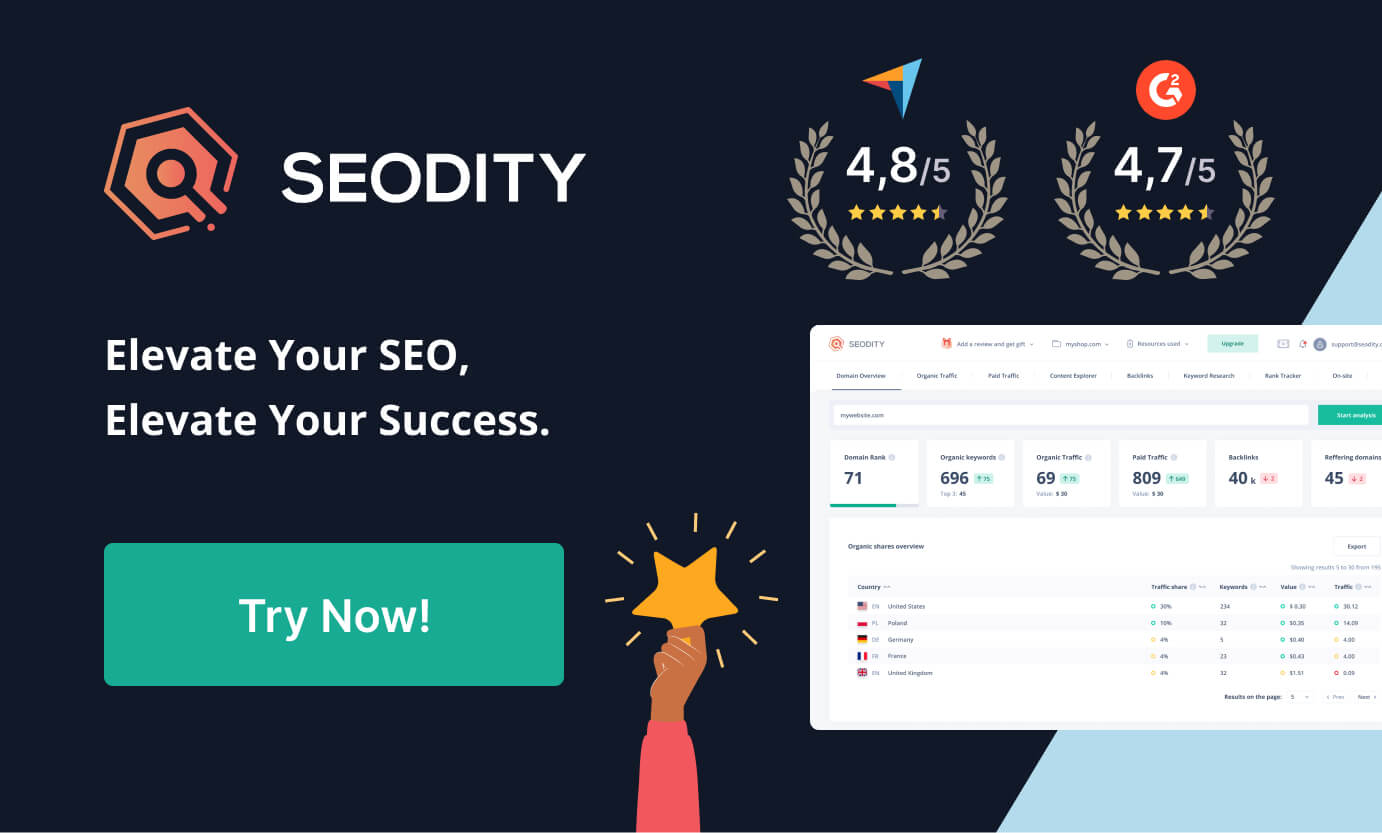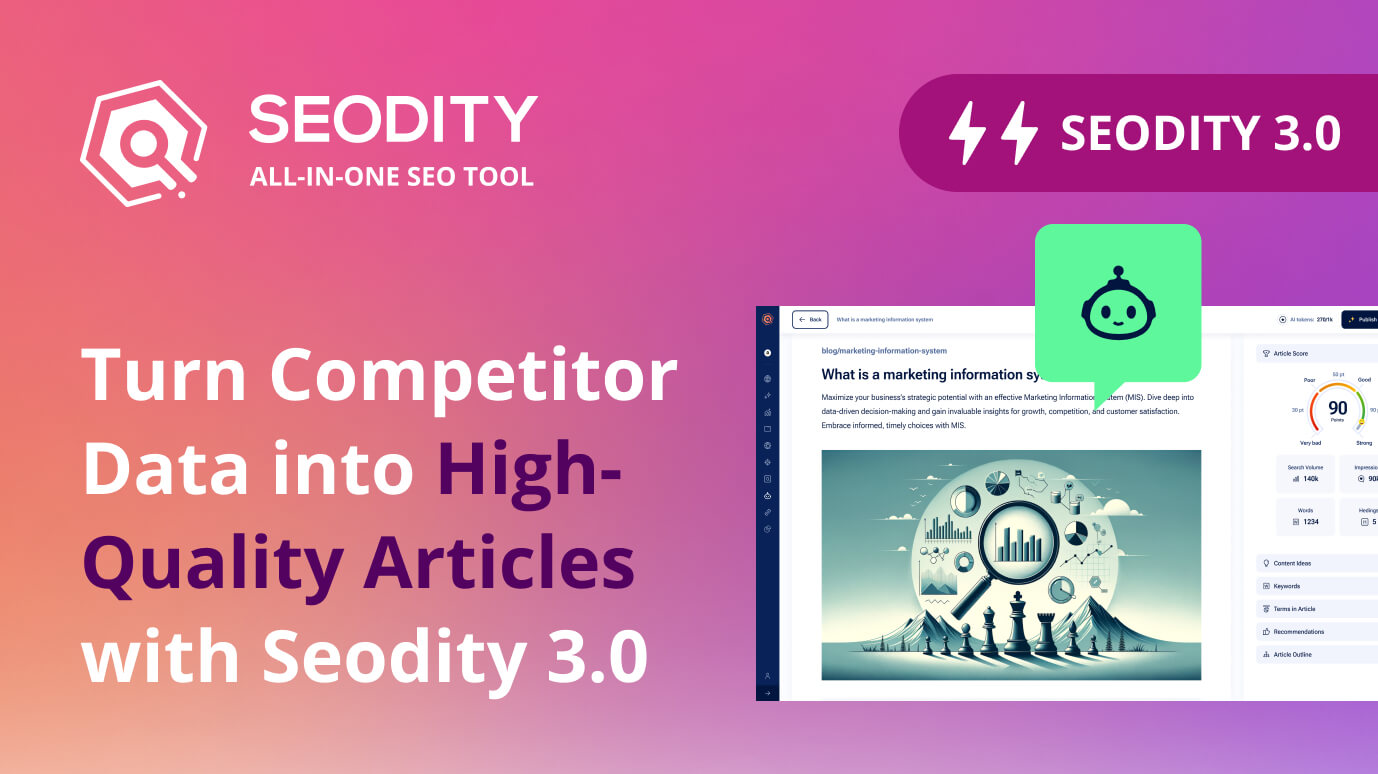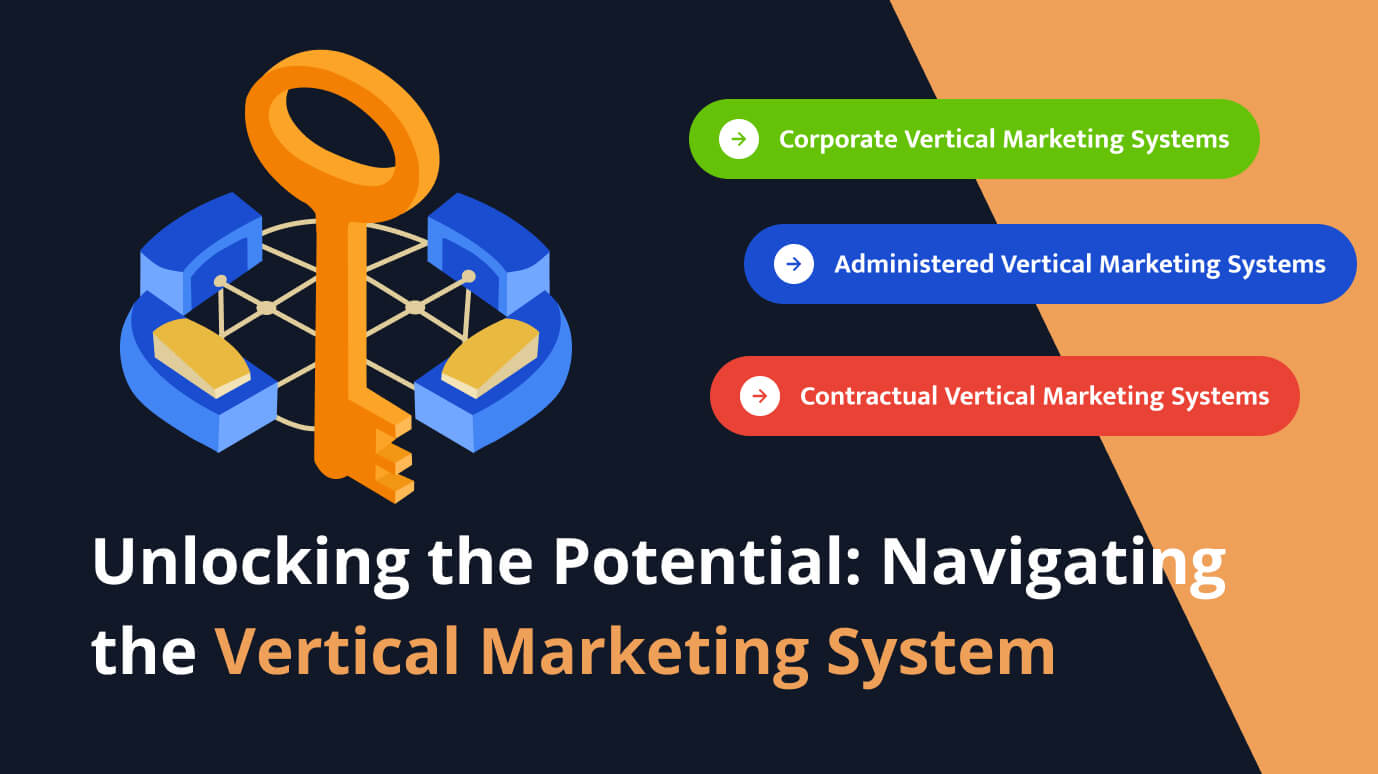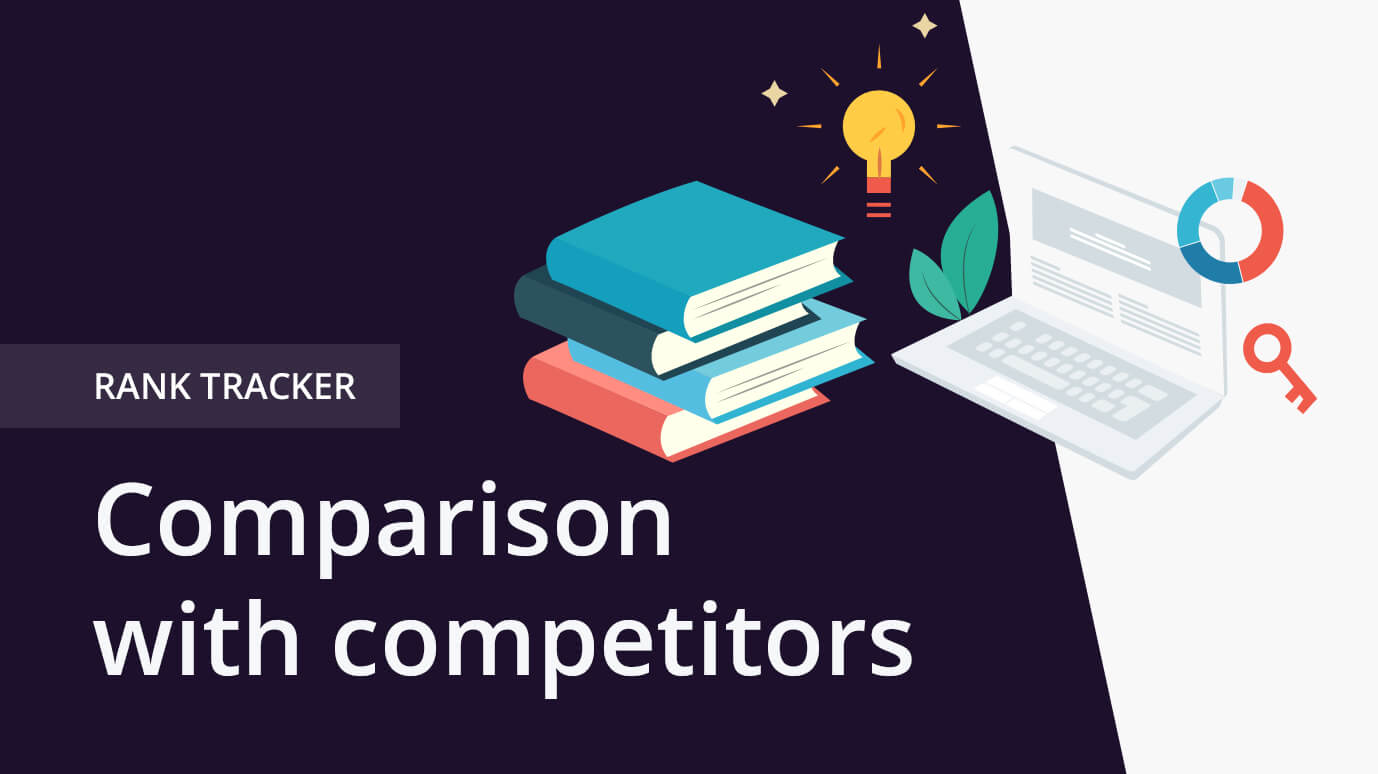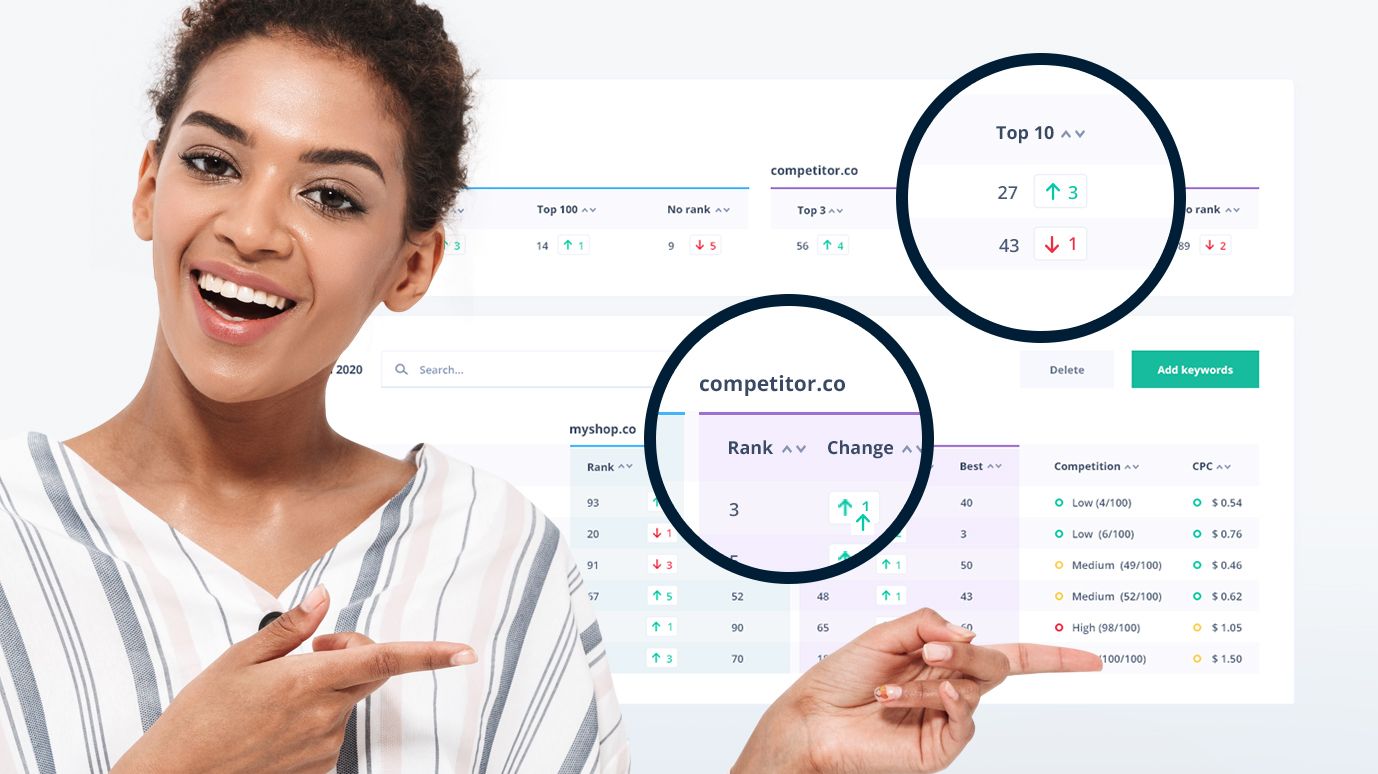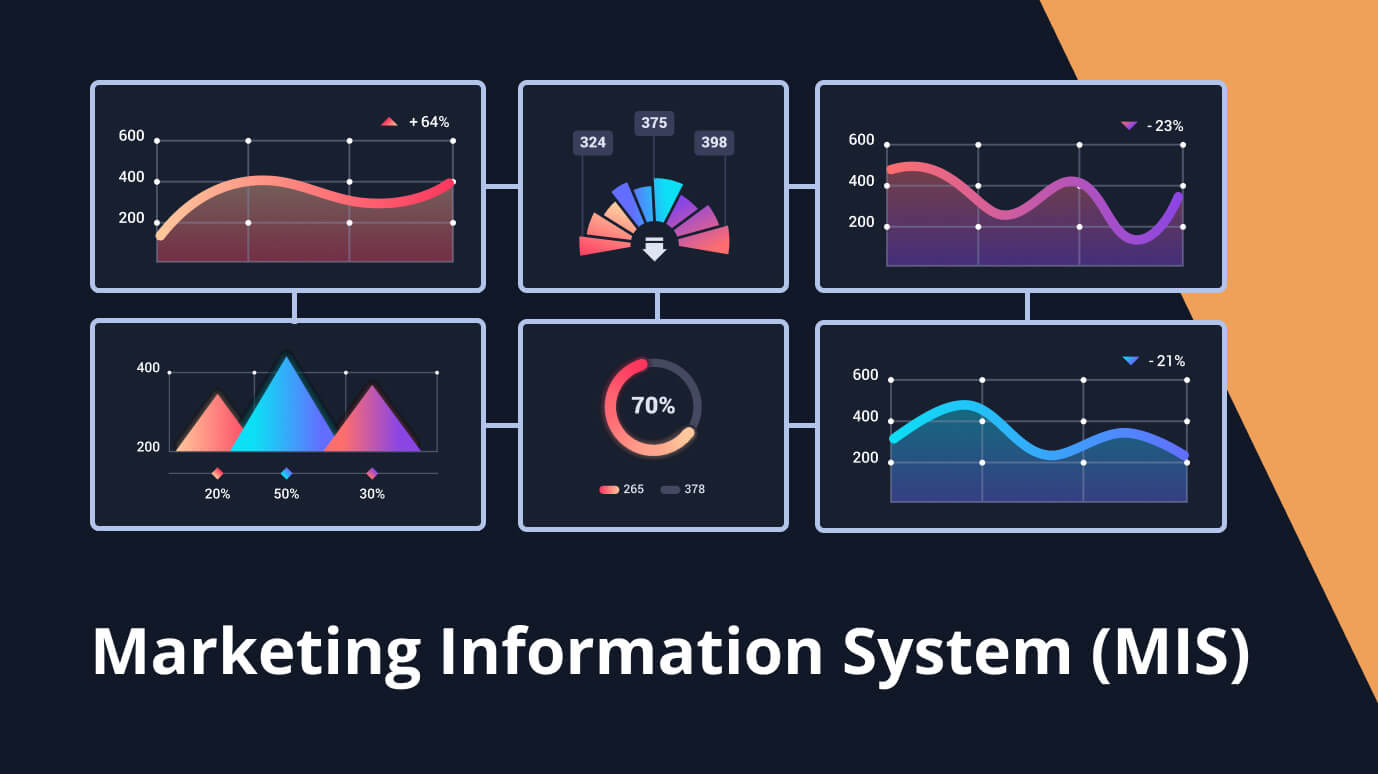
 8 min read
8 min readMarketing Information System (MIS)
In today's fast-changing world, businesses need a strong Marketing Information System (MIS) to succeed. Let's dive into what MIS is, why it's essential, and how its parts work together to give businesses the market knowledge they need.
Understanding the Marketing Information System (MIS)
Whether you're a marketer or a business owner, there comes a time when you need to base decisions on data rather than just intuition. A Marketing Information System (MIS) helps by providing valuable insights that guide your business growth and make it more resilient.
Benefits of an MIS
With a good MIS, you can make informed decisions, analyze supply and demand, stay ahead of competitors, discover new business possibilities, and improve customer satisfaction, all while managing risks effectively. Implementing MIS is powerful for your business.
One key benefit of employing a Management Information System (MIS) is its ability to help managers and other decision-makers make informed decisions. For instance, by using an MIS to track sales data, a retail store manager could identify which products are performing well and which are not. This information could then inform their decision about what inventory to stock up on, potentially leading to better sales performances and customer satisfaction.
Investing in an MIS
Setting up an MIS can be challenging—it costs money, takes time, and requires learning. But the strategic advantages it offers are worth the effort and initial cost.
What are the 4 types of marketing information systems?
A contemporary MIS stands on four fundamental pillars, each contributing to a comprehensive understanding of both the market and your company's position within it.
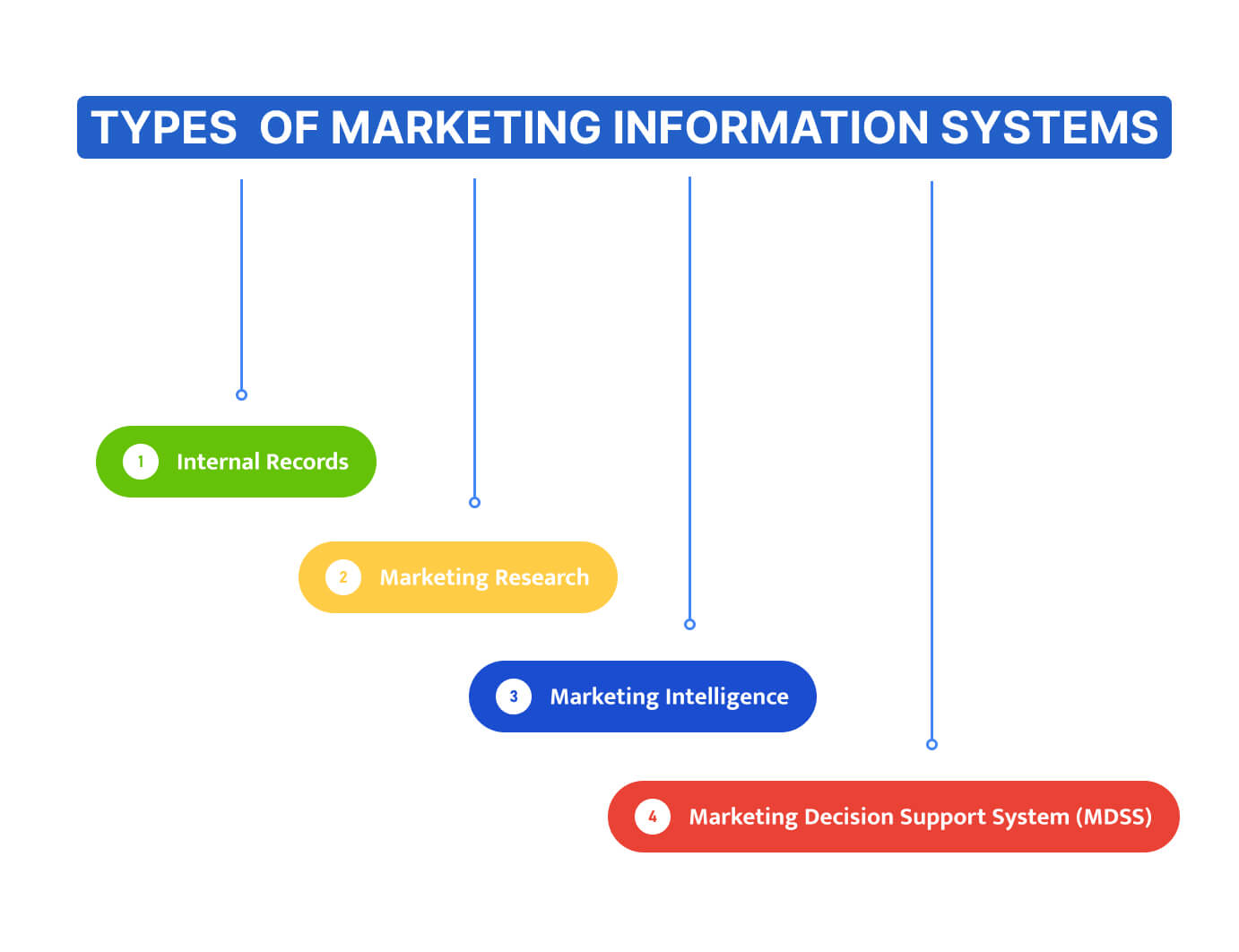
1. Internal Records: A Glimpse into Organizational Vitality
At its most basic, the MIS sources data from within. From cash flow analyses to nuanced sales patterns, these internal records are your go-to resource for historical and current performance data. This is where the raw narratives of your company's operational efficiency begin to take shape.
Example of Internal Records: Sales Reports
Monthly Sales Report: February 2023
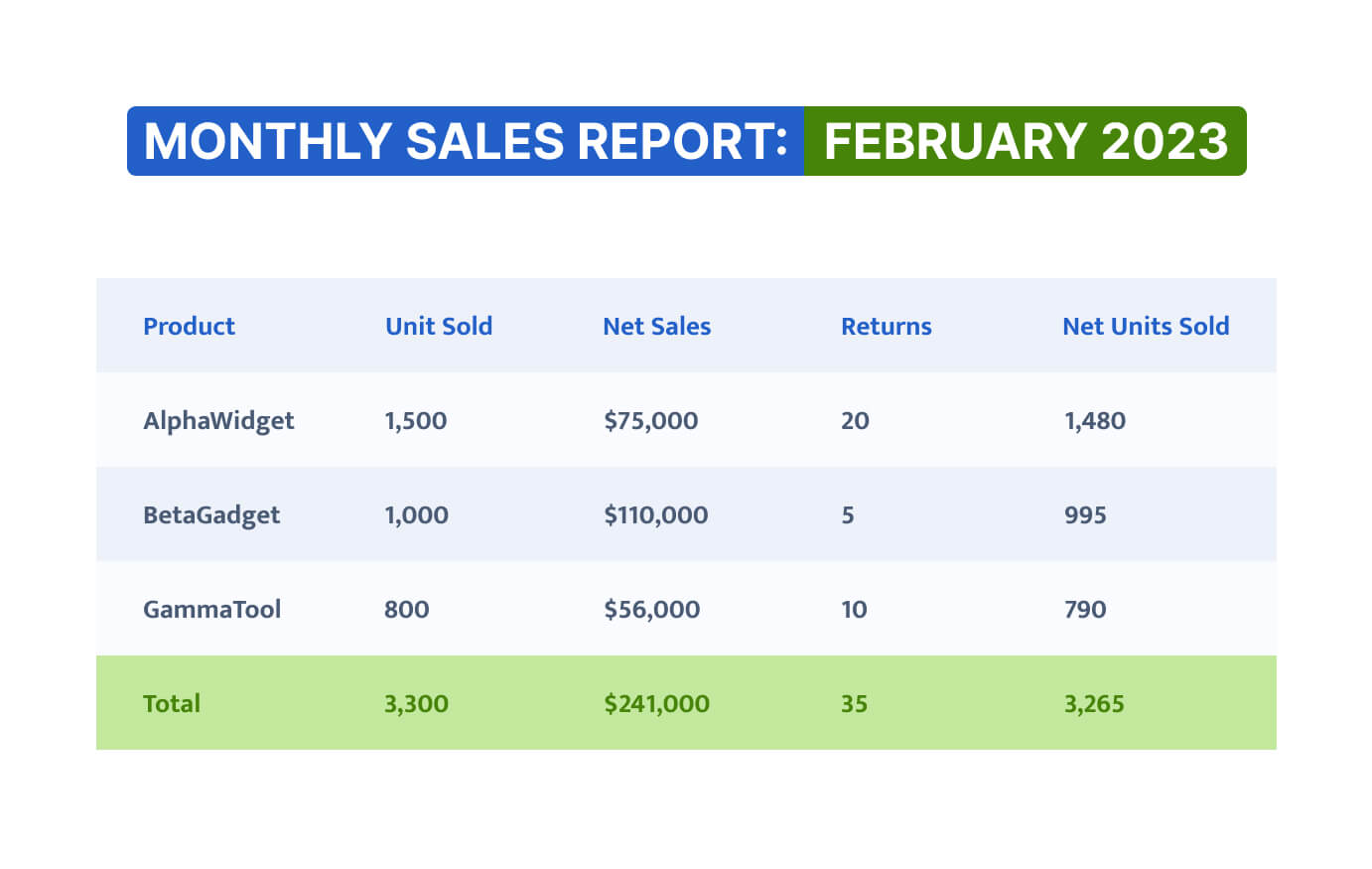
Notes
- The AlphaWidget saw an increase in returned units this month, potentially indicating a quality control issue that requires further investigation.
- The BetaGadget continues to have strong sales performance with high net sales, but should be monitored for market saturation.
- GammaTool experienced a stable month, but there could be room for sales growth through targeted marketing efforts.
Actions
- Quality Control to review the AlphaWidget returns and address any manufacturing defects.
- The Marketing Department to analyze BetaGadget competitive positioning to ensure ongoing sales success.
- Sales team to create a strategic plan for increasing GammaTool sales in the next quarter.
2. Marketing Research: Problem-Solving Through Data
When a particular challenge demands an innovative solution, marketing research comes into play. This probes into the heart of issues, matching questions with credible, targeted data—data that becomes the lifeblood of strategic pivots or product launches.
Example of Marketing Research:
Imagine a company named "AquaPure" that specializes in water filtration systems wants to introduce a new product line targeting health-conscious consumers. Before making a substantial investment, they decide to conduct marketing research to ensure they align their product with the market needs. Here's how their marketing research process might unfold:
1. Identifying the Problem:
AquaPure notices a shift in consumer behavior towards a greater emphasis on health and wellness, but they are uncertain how this translates to their industry. They want to know if there is a viable market for a premium line of water filtration systems designed to not only purify but also enhance water with minerals.
2. Research Design:
They decide to use a mixed-method approach, utilizing both qualitative and quantitative research to gather comprehensive insights.
3. Data Collection:
For quantitative data, AquaPure disseminates an online survey targeting their current customer base and prospects who have shown interest in healthier living. They ask questions regarding the importance of water quality in their daily health routines and the potential interest in a water system that adds beneficial minerals. Simultaneously, they organize focus groups with health and wellness community members to discuss their daily hydration habits and reactions to the concept of an enhanced water filtration system.
4. Data Analysis:
After gathering the data, AquaPure's marketing team uses statistical software to analyze the survey responses for clear patterns and preferences. The focus group sessions are meticulously reviewed, transcribing the discussions and noting any recurrent themes or opinions.
5. Interpretation:
The data shows a clear interest in products that support a healthier lifestyle. AquaPure finds that, indeed, there is significant excitement around the idea of a water filter system that not only purifies but also infuses water with minerals.
6. Action Plan:
With these insights, AquaPure decides to move forward with the development of a premium water filtration line called "AquaHealth." They utilize the research data to craft targeted messaging that communicates the benefits aligned with consumer values and the overall health and wellness trend.
7. Implementation and Feedback:
Upon launching "AquaHealth," they monitor sales and customer feedback closely to adjust their marketing strategies and product offerings as needed, ensuring they continuously meet the evolving needs of their market.
Potential usage of Seodity in this case:
- Keyword Research: Before conducting the survey, Seodity could be used to identify popular search terms related to water purification and health trends. This would help tailor the survey questions and focus group prompts.
- Competitive Analysis: Seodity's competitor analysis feature would help AquaPure understand how similar products are positioned in the market, including their online visibility and SEO tactics.
- Content Optimization: Using insights from Seodity on high-performing content, AquaPure could craft engaging and SEO-friendly blog posts, articles, and product descriptions focused on the benefits of AquaHealth.
- Performance Tracking: Once AquaHealth is launched, Seodity could track the product's online presence, monitoring keyword rankings, and website traffic to inform and adapt digital marketing strategies.
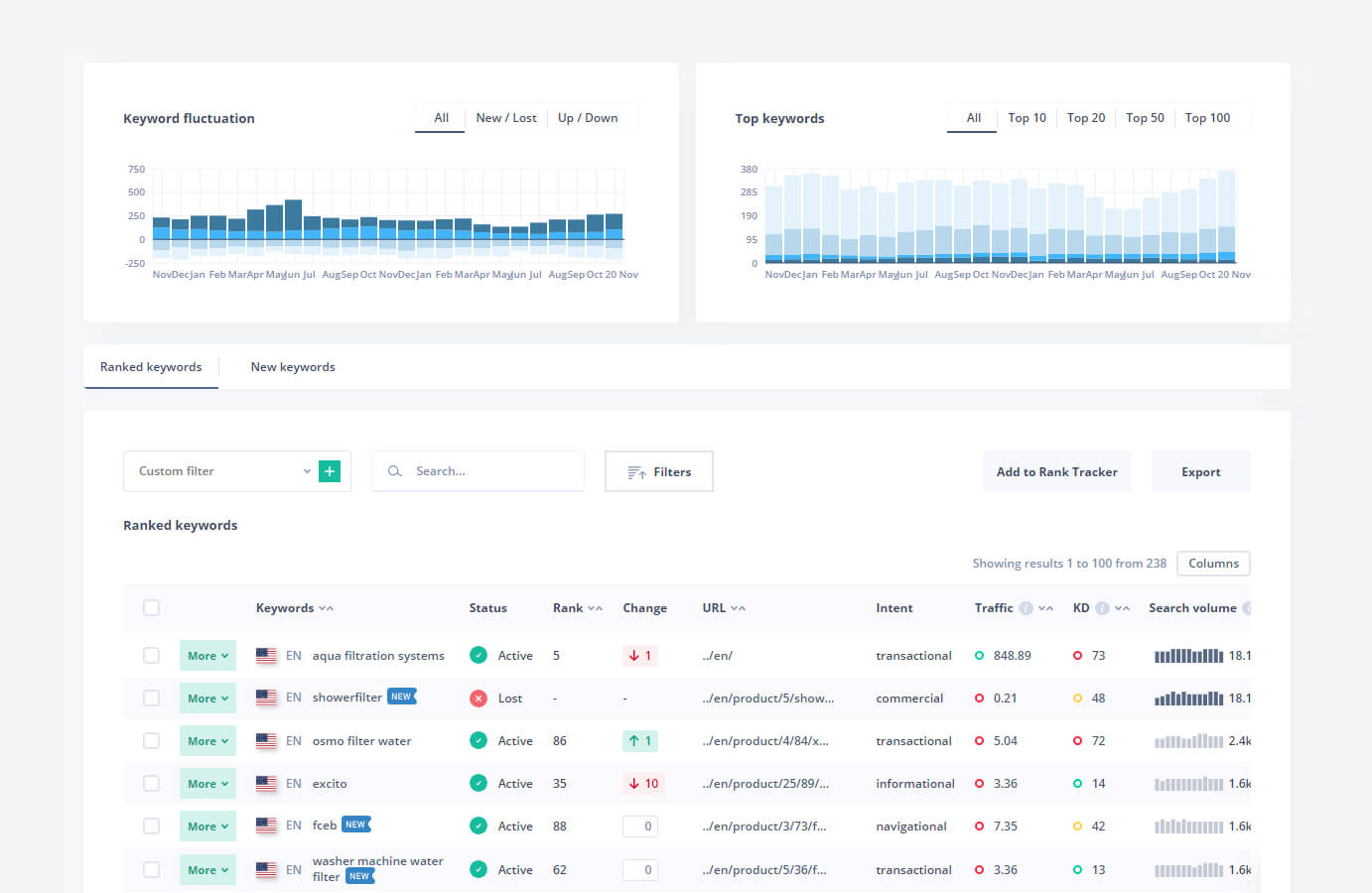
3. Marketing Intelligence: Eyes and Ears on the Market
This dynamic data type ensures you're never blindsided by shifts in market trends or sly competitive maneuvers. Derived from an array of external resources, marketing intelligence lets you keep your strategic radar tuned to the minutest vibrations in the marketplace.
Real Example and Tool:
A real-life example might involve a company like Nike. By employing marketing intelligence, Nike can stay updated on the latest athletic wear trends, monitor competitor releases from brands like Adidas or Under Armour, and understand the changing needs of its customer base through social engagement and analysis.
Tool: Brand24 It is a social media monitoring tool that allows companies to track mentions of their brand, competitors, and industry keywords across the internet. By analyzing social mentions and sentiment, Brand24 provides insights that companies can use to gauge public perception, follow trends, and react to customer demands in real-time.
Potential Usage:
- Trend Analysis: A common application of marketing intelligence is trend analysis. Here, companies track consumer behavior patterns to identify new market opportunities or shifts in preferences. For instance, a tech company may analyze social media conversations to predict the next big demand in consumer electronics.
- Competitor Monitoring: Keeping an eye on your competitors' marketing strategies, pricing changes, or product launches can give you a critical edge. A beverage company might monitor the market to quickly respond to a rival's introduction of a new energy drink with targeted promotions of their own product line.
- Consumer Feedback: Companies often use marketing intelligence tools to gather feedback from customers about their products and services. This data can help in refining offerings and improving customer satisfaction. A restaurant chain could use sentiment analysis to adjust their menu or service based on customer reviews and feedback.
4. Marketing Decision Support System (MDSS): The Analytical Engine
Imagine a digital maestro weaving through mountains of data to spit out actionable insights - that's your MDSS. Leveraging specialized software, it enables a sophisticated understanding of market segmentation, competitor tactics, and consumer sentiments.
Example: A regional retail chain decided to implement an MDSS to better understand its customer base and optimize their marketing efforts. By integrating their transaction data, customer feedback, and social media analytics, the MDSS provided the following support:
- Market Segmentation Analysis: The MDSS identified distinct segments within the retail chain’s market by analyzing buying patterns, customer demographics, and even sentiment analysis from social media. This led to the creation of tailored promotional campaigns for each segment, resulting in a 15% increase in targeted campaign conversion rates.
- Competitor Tactics Assessment: The system tracked competitors’ pricing, promotions, and product launches, providing weekly reports that allowed the retail chain to adjust their strategy proactively. This agility improved their competitive edge and maintained market share in a highly competitive environment.
- Consumer Sentiments Tracking: The MDSS deployed natural language processing (NLP) algorithms to analyze customer reviews and social media chatter. By quantifying sentiment scores, the retail chain could swiftly pinpoint areas of customer dissatisfaction and make informed decisions on which issues to address promptly.
- Campaign Performance Evaluation: After executing marketing campaigns, the MDSS was used to evaluate their effectiveness. With the aid of this system, the retail chain improved its ROI from marketing campaigns by 22% within the first year by continually learning and adapting their strategies based on the insights provided.
- Predictive Analytics: Employing predictive models, the MDSS forecasted future sales trends and customer behaviors, allowing the retail chain to adjust inventory and marketing strategies ahead of demand curves, effectively reducing overstock and stockouts.
- Personalization Opportunities: With insights into individual customer preferences and behaviors, the MDSS enabled the launch of a personalized marketing initiative, resulting in a loyalty program that led to a 30% increase in repeat business among engaged customers.
How MIS is Used in the Real World
In retail, loyalty cards and customer profiles help stores figure out what you like to offer better deals and promotions. Likewise, booking websites track what you do to change prices and create deals just for you. MIS doesn't just help make decisions; it predicts what customers will need.
Starting with MIS in Your Business
You're ready to start using an MIS in your business. It's more than a new system; it's a way to stay sharp and make smart choices, even when the market is rough.
When you make MIS part of your business decisions, you're setting yourself up to stay relevant to customers and to make more money.

Marcin is co-founder of Seodity
.svg)
